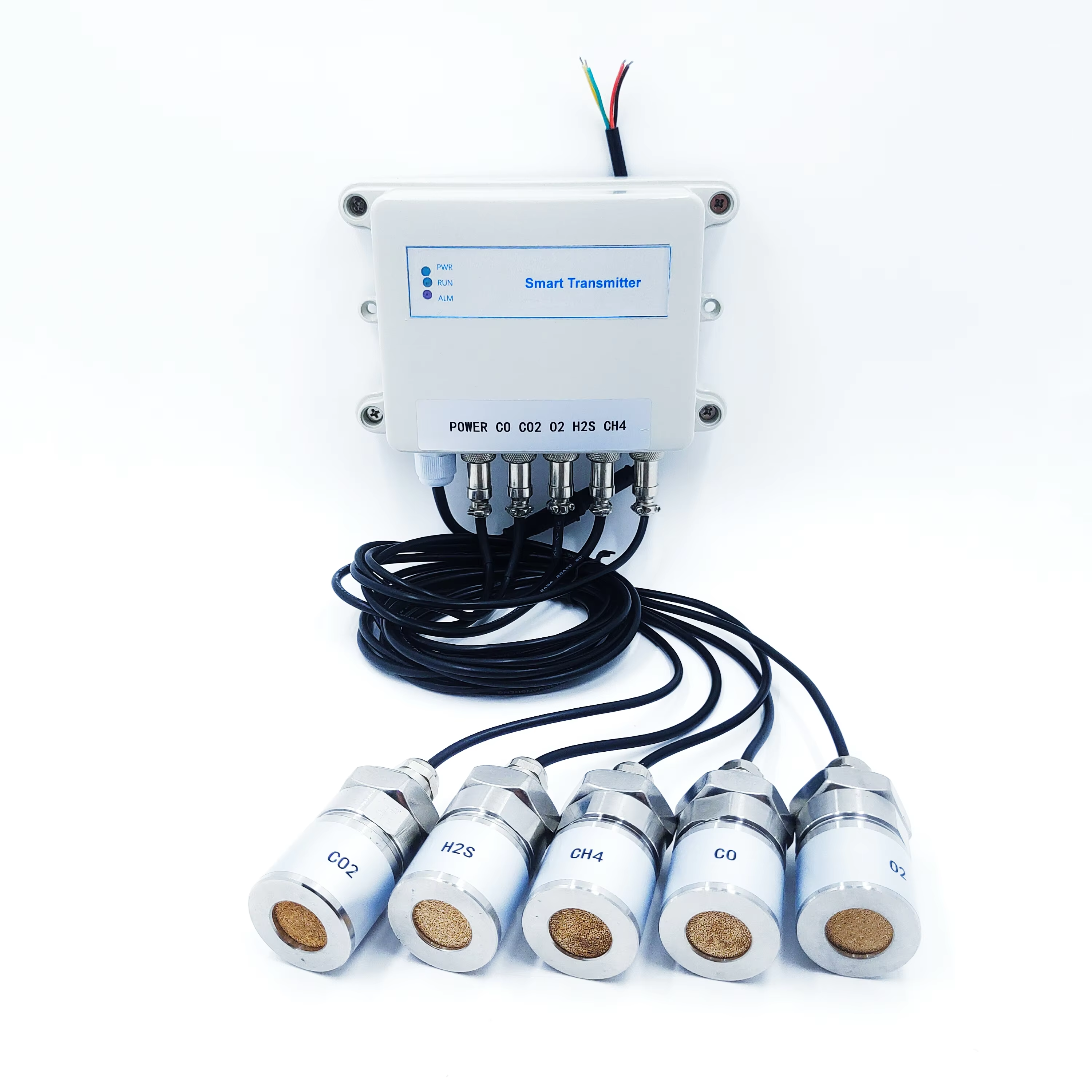Abstract
As greenhouse agriculture continues to expand in Spain, particularly in regions like Andalusia and Murcia, the need for precise environmental monitoring has become increasingly critical. Among various parameters that need careful management, air quality—specifically levels of oxygen (O2), carbon dioxide (CO2), carbon monoxide (CO), methane (CH4), and hydrogen sulfide (H2S)—plays a pivotal role in plant health, growth, and overall greenhouse efficiency. This paper explores the influence of advanced air quality sensors with a 5-in-1 functionality on monitoring and controlling temperature and humidity in Spanish greenhouses, emphasizing their impact on crop yield and environmental sustainability.
1. Introduction
Spain is one of Europe’s leading countries in greenhouse agriculture, providing a substantial percentage of vegetables, fruits, and ornamental plants. The Mediterranean climate, characterized by hot summers and mild winters, offers considerable advantages for greenhouse farming. However, with these advantages come challenges related to air quality, temperature, and humidity control, which are essential for optimizing plant growth and productivity.
Advanced air quality sensors capable of measuring O2, CO, CO2, CH4, and H2S are becoming integral components of modern greenhouse environments. These sensors allow for real-time data collection, which can subsequently inform climate control systems and agricultural practices.
2. The Role of Air Quality in Greenhouse Agriculture
Air quality in greenhouses directly affects plant physiology, growth rates, and disease susceptibility.
-
Carbon Dioxide (CO2): As a key ingredient for photosynthesis, maintaining optimal CO2 levels is crucial. CO2 concentrations typically range from 400 to 1,200 ppm for optimal plant growth. Sensors can monitor CO2 levels, allowing growers to manage supplemental CO2 applications during daylight hours.
-
Carbon Monoxide (CO): Although CO is not required for plant growth, its detection is necessary because high levels can indicate inadequate ventilation. This can result in harmful effects on plant health and the risk of asphyxiation for both plants and workers.
-
Methane (CH4): While plants do not utilize methane, its presence indicates potential issues, such as anaerobic conditions or leaks from biological materials. Monitoring methane levels helps maintain a healthy greenhouse environment.
-
Hydrogen Sulfide (H2S): H2S is toxic to plants and can disrupt normal physiological processes. Its presence may indicate decay processes or issues with organic fertilizers. Monitoring H2S helps ensure that plant health is not compromised.
-
Oxygen (O2): Essential for respiration, maintaining adequate oxygen levels in the greenhouse environment is critical. Low oxygen levels can lead to poor plant growth and increased susceptibility to diseases.
3. The Influence of Sensors on Temperature and Humidity Management
3.1. Integrated Climate Control
Modern greenhouse operations are increasingly incorporating climate control systems that integrate air quality sensors. By linking these sensors with temperature and humidity control systems, growers can create a responsive environment. For example, if CO2 levels drop during the day, the system can adjust ventilation rates to maintain optimal CO2 levels without compromising temperature and humidity.
3.2. Data-Driven Decision Making
The data collected from 5-in-1 air quality sensors enables data-driven decisions. By continuously monitoring air quality, growers can assess the relationship between air quality parameters and environmental conditions (temperature and humidity). This understanding allows them to optimize growth conditions, reducing energy consumption and increasing efficiency.
3.3. Improved Crop Yield and Quality
The impact of controlled air quality on crop yield is substantial. Research indicates that maintaining optimal CO2 and O2 levels can increase production rates significantly. In conjunction with controlled humidity levels, this improves overall plant health, enhances the quality of produce, and leads to increased market value.
4. Impacts on Sustainability
By utilizing air quality sensors for better temperature and humidity management, Spanish greenhouse operations can also achieve greater sustainability.
-
Water Usage Reduction: Optimal humidity control can reduce water usage by minimizing evaporation and transpiration rates. This is crucial in regions of Spain where water is a limited resource.
-
Energy Efficiency: Accurate sensor data facilitates the creation of energy-efficient climate control strategies, reducing reliance on heating and cooling systems. This not only lowers energy costs but also minimizes the greenhouse gas emissions associated with energy use.
-
Pesticide Use: Improved air quality and optimal growing conditions lead to healthier plants that are less susceptible to diseases, potentially reducing the need for chemical pesticides.
5. Conclusion
The deployment of 5-in-1 air quality sensors in greenhouse agriculture has a profound impact on temperature and humidity management in Spain. By continuously monitoring critical air quality parameters, these sensors enable growers to optimize conditions for plant growth, increase crop yields, and promote sustainable farming practices. As technology continues to evolve, the integration of advanced sensor systems will play an even more crucial role in ensuring the success and sustainability of greenhouse agriculture in Spain and beyond.
For more air gas sensor information,
please contact Honde Technology Co., LTD.
Email: info@hondetech.com
Company website: www.hondetechco.com
Post time: Feb-13-2025


